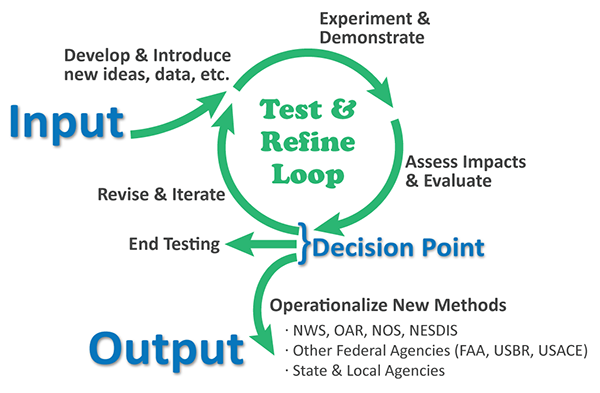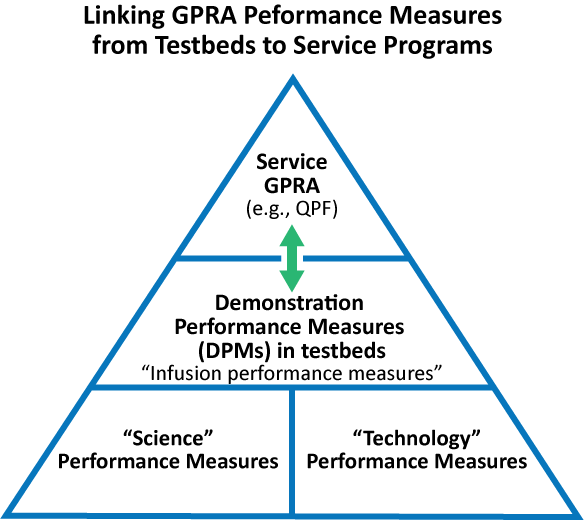HMT Publication Notice
September 20, 2013
A journal article entitled The emergence of weather-focused testbeds linking research and forecasting operations, by F. M. Ralph et al., appeared in the August 2013 issue of Bulletin of the American Meteorological Society..
This paper summarizes the development and current status of 10 different testbeds that now exist and are helping bridge weather research and forecasting operations. They range from applications focused (e.g., Joint Hurricane Testbed and Hydrometeorology Testbed) to technique focused (e.g., Joint Center for Satellite Data Assimilation and Developmental Testbed Center). The creation of HMT is described ands selected accomplishments of HMT are summarized briefly, including:
- Identification of atmospheric rivers as a key phenomena causing heavy rain on the west coast
- Invention of "atmospheric river observatories" (ARO)
- Creation of a unique mesonet with 93 observing stations across California
- Provided key support within NOAA's rapid response to the Howard Hansen Dam crisis
- Motivated installation of a scanning weather radar by a TV station near San Francisco
- The existence of HMT-West led to a major interagency field study – "CalWater"
- Extensive training and interaction with forecasters in the region have been conducted
- Potential new forecast performance measures have been developed
- Development of HMT-Southeast and collaboration with NASA's PMM program.
This paper presents a very brief synopsis of roughly 10 years of development of HMT, from the first proposal in 2002, to results from 2013.
A key section describes, for all testbeds, recommendations for methods to measure performance. This section describes some of the challenges facing testbeds as bridging institutions between organizations that measure their individual performance very differently from one another (operations measures differ from research measures), and suggests some approaches to help with this in the future.
Contacts: Marty Ralph and Janet Intrieri
Ralph, F.M., J. Intrieri, D. Andra, R. Atlas, S. Boukabara, D. Bright, P. Davidson, B. Entwistle, J. Gaynor, S. Goodman, J. Jiing, A. Harless, J. Huang, G. Jedlovec, J. Kain, S. Koch, B. Kuo, J. Levit, S. Murillo, L.P. Riishojgaard, T. Schneider, R. Schneider, T. Smith, and S. Weiss, 2013: The Emergence of Weather-Related Test Beds Linking Research and Forecasting Operations. Bull. Amer. Meteor. Soc., 94, 1187–1211, 10.1175/BAMS-D-12-00080.1

